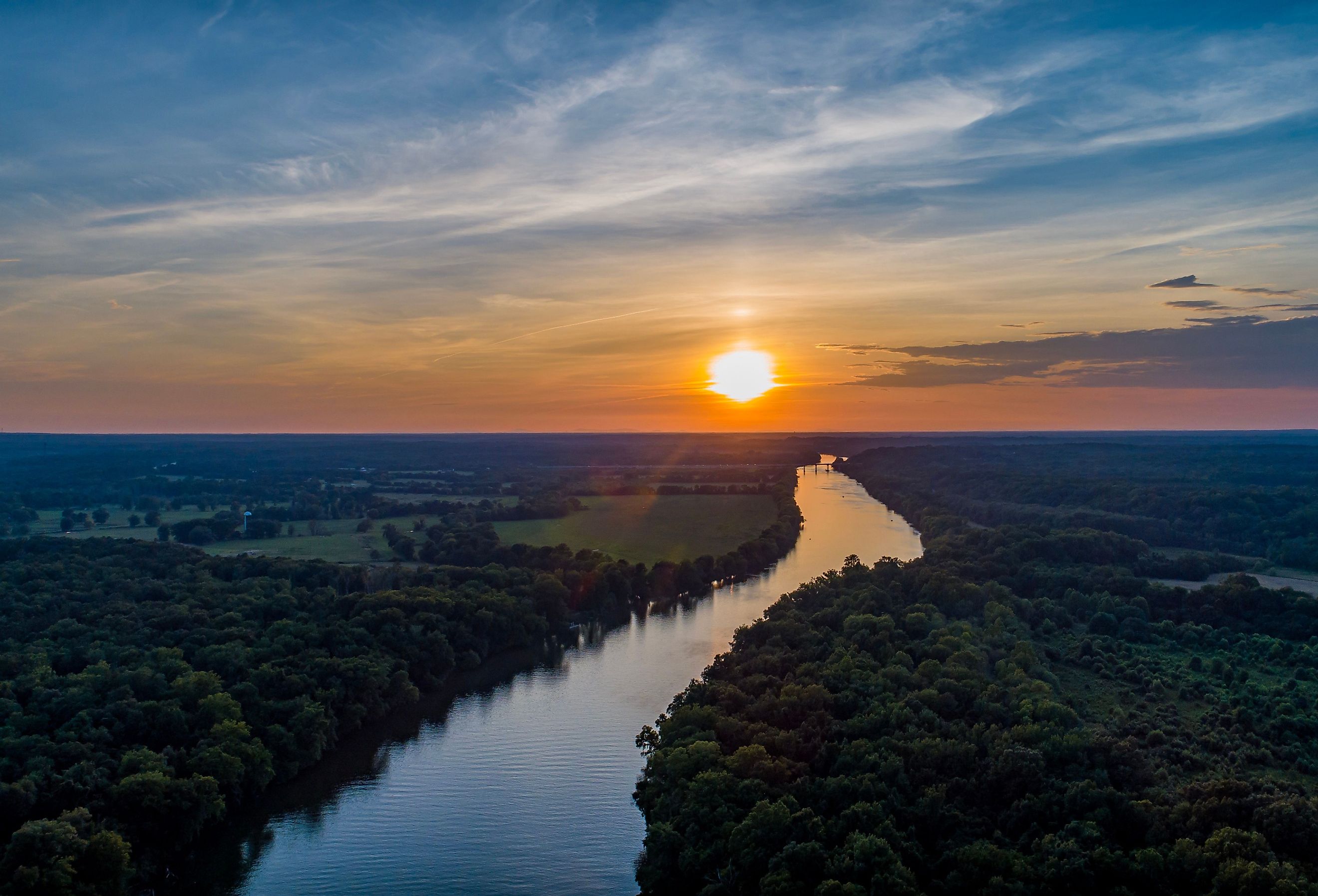
James River
The James River is a significant body of water in American history. When the English came, they created semi-permanent settlements in the area in the early 1600s. Before the English settlers arrived, tribes lived near the river for thousands of years. Because the James River is a significant source of fresh water and food, it is only natural that tribal hunters would have chosen to settle around it. This article will go into greater detail about The James River and its history and course.
Location of the James River
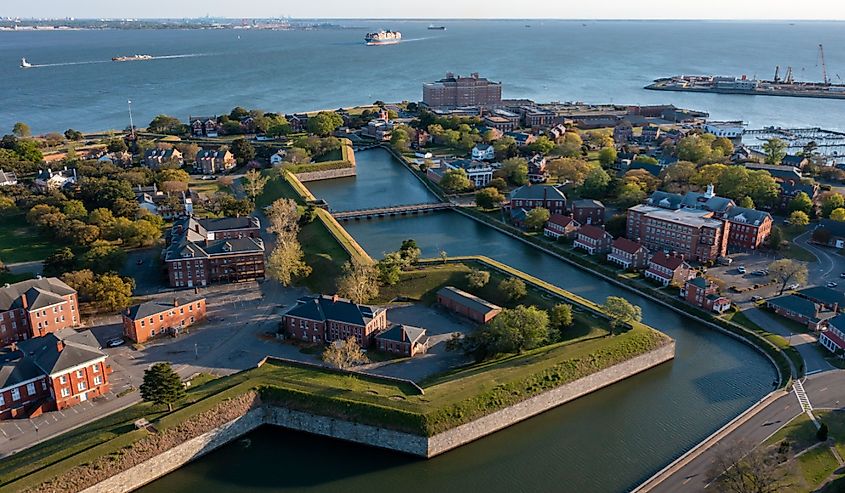
The James River is a prominent body of water in central Virginia in the United States. It is just south of Charlottesville, one of the oldest cities in Virginia. Virginia's capital city, Richmond, is also located near the river's banks.
The river begins in western Virginia in the Appalachian mountains. It is only a few miles east of the border of West Virginia, and flows a total of 348 miles (560 kilometers) southeast until emptying into the Chesapeake Bay.
The river is actually the combined flow of the Jackson and Cowpasture Rivers. When these rivers are included in the total length of the James River, it extends for over 440 miles (708 kilometers). The James River flows in the Blue Ridge Mountains, journeys past Lynchburg, before finally ending in the Chesapeake Bay in the Atlantic Ocean.
Along this course, there are several notable man-made landmarks, including a suspension bridge, the city of Richmond, and a large dam near the capital. The dam is named Bosher's Dam and was an additional construction added to the foundation of an earlier dam built to promote fishing in the river.
History of the James River
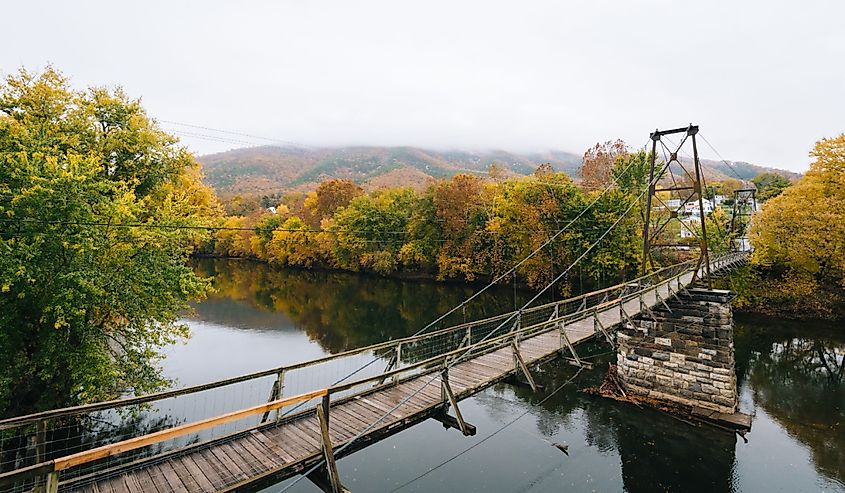
The James River was originally called the Powhatan River by the Native Americans. These people were commonly known as the Powhatans, which is where the river gained its name. The Powhatan tribe is a more generic term used to refer to several groups of Algonquian tribes residing near Virginia.
Algonquian is a rather broad term since it refers to a large native language group. These people lived along the United States’ northeastern coast and the northern border of modern Canada. They mostly hunted their food and foraged wild plants however they also grew a variety of grasses, squash, and beans. It is estimated that the Powhatan and other natives lived in the area for over 16,000 years.
Colonial settlers first arrived in Virginia from Britain in 1607 and founded the Jamestown settlement. Jamestown received its name from the British King at the time, James.
Jamestown, which was originally named James Fort, was built on a small island on the James River. Today, this island is a peninsula, and the first settlement is a prominent tourist attraction.
The Flow of the James River
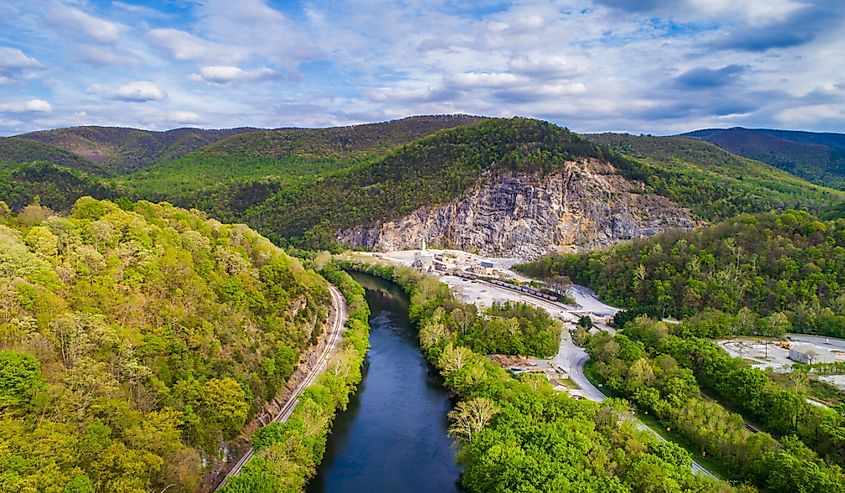
Starting in the Appalachian Mountains, the James River flows east through most of central Virginia. The James River ends at the Chesapeake Bay. The Chesapeake connects the river to the Atlantic Ocean.
Climate and Wildlife of the James River
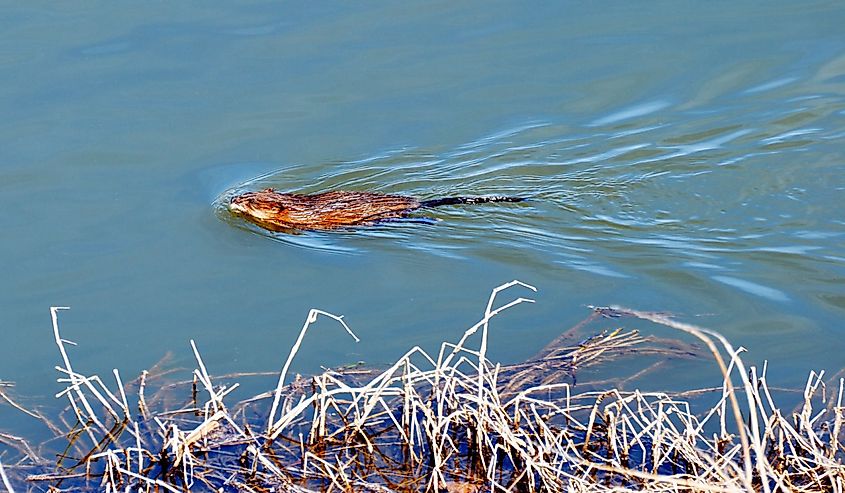
Virginia has a temperate climate. Temperate climates are balanced by the Atlantic Ocean and the Gulf Stream. Temperatures typically rest around 70 to 80 degrees Fahrenheit in the summer (21-27 degrees Celsius). Temperatures are cold in winter with the weather being usually between -1 to 30 degrees Fahrenheit (-18 to -1 degrees Celsius).
There are a lot of mammals living near the river. Whitetail deer, otters, coyotes, and red and gray-tailed foxes are the most plentiful. Some common birds include mallard ducks, muted swans, herring, several varieties of gulls, and both the barred and great-horned owl.
Plant life is plentiful along the river, including near the suburban areas. Common tree species include Sycamore, Maple, Oak, and some varieties of pine trees. Vines are also prevalent in the region, including English Ivy, Japanese Hop, Bittersweet Vine, Virgin's Bower, and Greenbrier.
Conclusion
The James River is sometimes called America's Founding River due to its importance to Jamestown, Virginia. Today the river is an important source of fresh drinking water and fishing. It makes a great habitat for various birds, small and large mammals, and a few reptiles.











